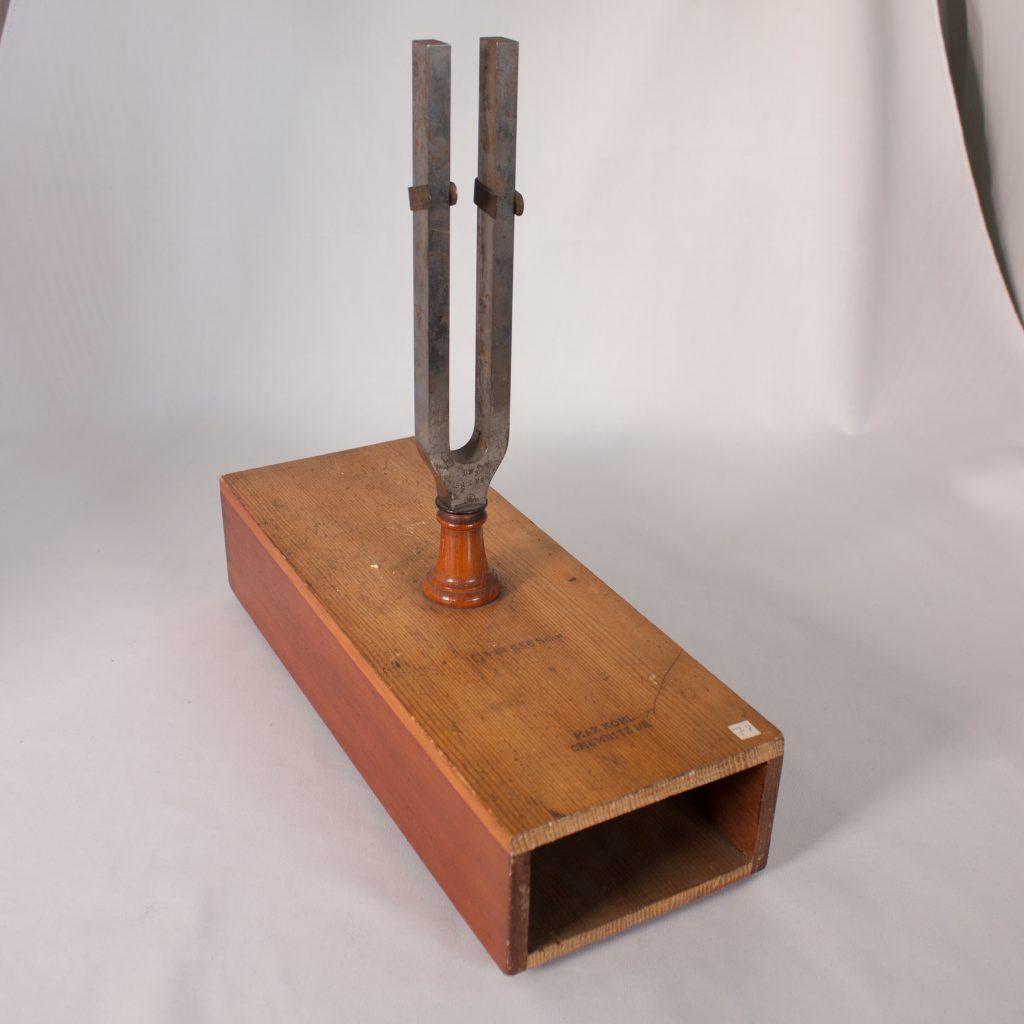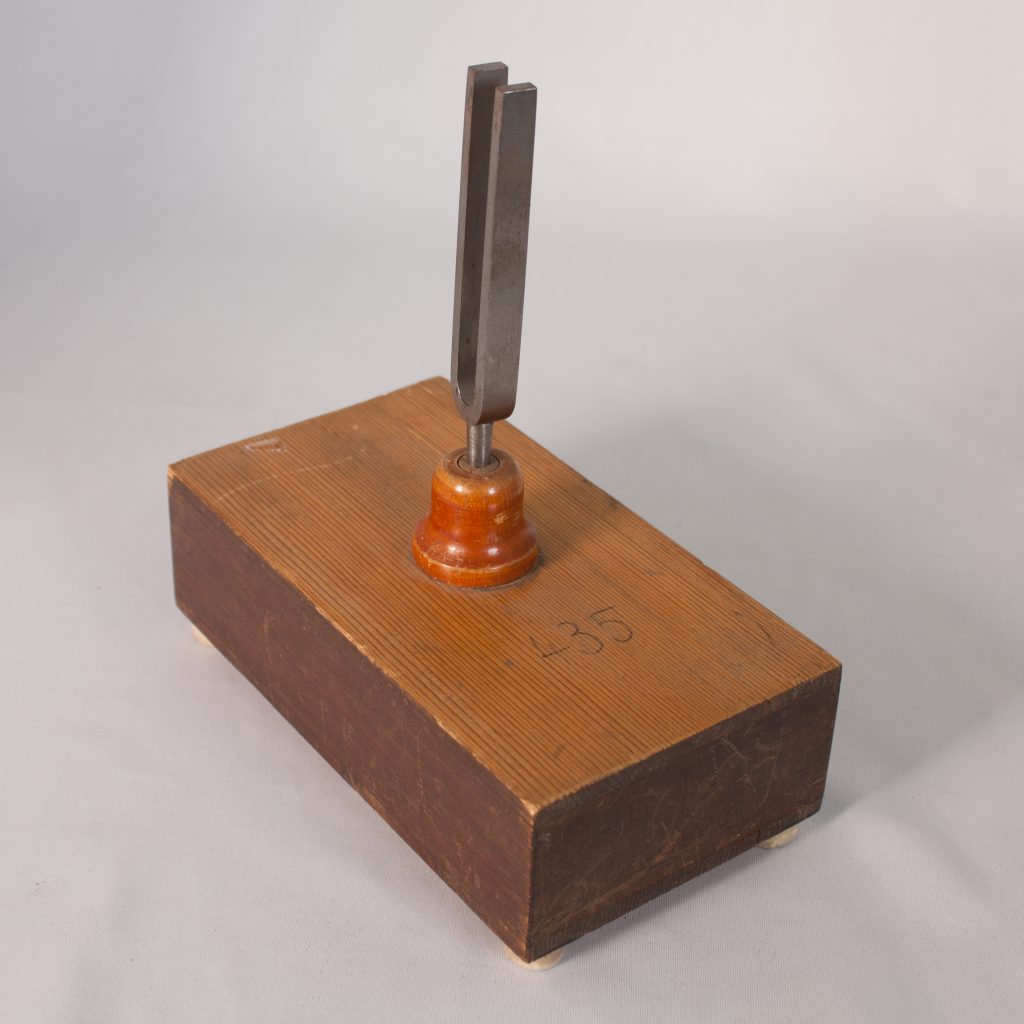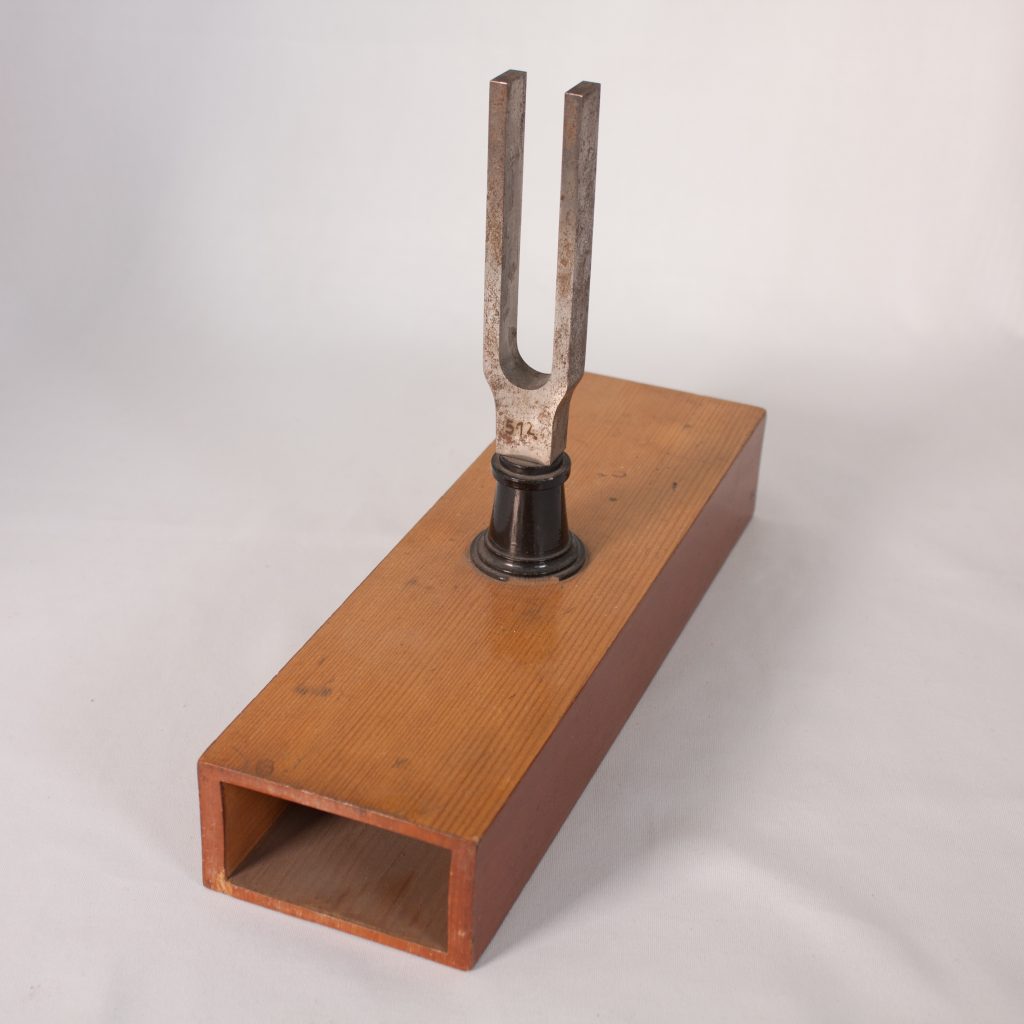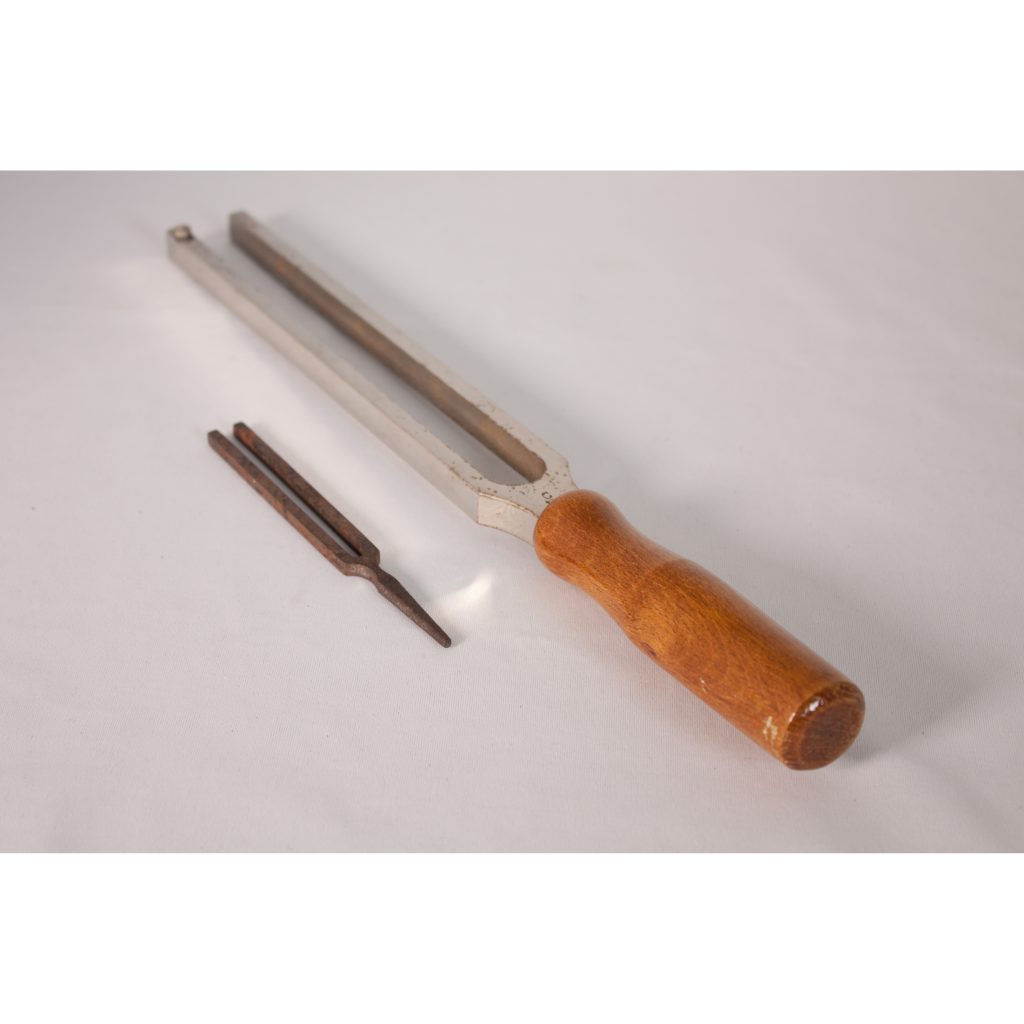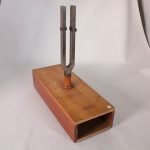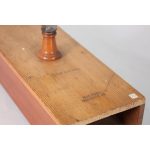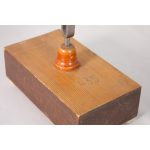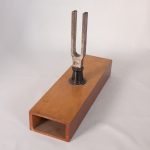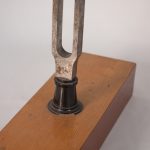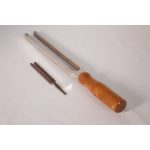Artefacts
Tuning forks owned by the Media Archaeological Fundus
Tuning forks owned by the Media Archaeological Fundus
Inscription: C1 = 256 Schw. [= vibrations] Max Kohl Chemnitz i/S
Inscription: 435
Inscription: 512
This picture shows a tuning fork, a mechanical device traditionally used to create a stable reference frequency. When the tuning fork is set in motion by hitting it with the hand or another solid object, its vibration decreases after several seconds of audible tone. To amplify the vibrations, a resonance box is used. Before the advent of electronic technology, one of the most viable ways of tuning a fork exactly was to count the beats (periodic changes in overall volume) that occur when two forks with similar frequencies are sounded simultaneously.
Historically, it was possible to visually represent the regular vibrations of the tuning fork using a kymograph. Likewise, Édouard-Léon Scott de Martinville’s mid-nineteenth-century phonautograph was sometimes used to create a combined visualization of the tuning fork’s vibrations and the sound itself. This allowed the later synchronization of the otherwise irregular speed of visualization and thus the recreation of the original sound—a “recording” made before Thomas Edison’s invention of the phonograph in 1877.
Tuning forks also played a role in musical-theoretical experiments. For example, in the late nineteenth century, the German conductor and composer August Eduard Grell used a custom-made set of tuning forks as a means to experiment with his own 64-tone system of just intonation (a method of organizing musical tones that are related by simple ratios).[3] Grell’s set is held at the Staatliches Institut für Musikforschung in Berlin and differs from the tuning forks shown here.
Nikita Braguinski
© 2015 – 2024 Humboldt-Universität zu Berlin

